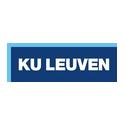In short
Pork and pork-derived products are one of the main sources of human salmonellosis in the EU. The current Salmonella containment strategies in pig farming are not sufficient. Salmonella can form biofilms, i.e. a consortium of microorganisms in which cells stick to each other and also to a surface, embedded within a slimy extracellular matrix, which protects the micro-organisms against external factors. Biofilm formation by Salmonella might contribute to both the chronic Salmonella carrier state in pigs and the inefficacy of current measures. The goal of this project is to expand the knowledge on the role of Salmonella biofilm in pig farming, including via the use of whole genome sequencing. This knowledge can lead to innovative anti-Salmonella therapies that are urgently needed, alongside of cheap and fast diagnostic tools to monitor infections on-farm.
Project description
Due to high levels of antibiotic resistance, the current Salmonella containment strategies in pig farming are largely based on biosecurity measures, adaptations to feed form/ content, and drinking water acidification. Since the current measures do not suffice, innovative non-antibiotic anti-Salmonella therapies are urgently needed, alongside of cheap and fast diagnostic tools to monitor infections on-farm. Biofilm formation by Salmonella in the gut mucosal layer is expectedly an important factor, contributing to both the chronic Salmonella carrier state in the gut of adult pigs and the inefficacy of current measures.
The goal of this project is to expand the knowledge on the role of Salmonella biofilm in pig farming at 2 levels.
- to investigate Salmonella biofilm formation as a strong contributor to its chronic colonization in the pig gut by determining the contribution of biofilm formation to epithelial attachment, ability to compete with the gut microbiota and finally protection against drinking water acidification and the immune response;
- to identify genetic markers for the capacity of biofilm formation, thereby expanding the knowledge on the role of Salmonella biofilm in pig farming, and that can be included in future functional diagnostic tools if an official on-farm Salmonella monitoring programme would be re-installed; thereby focusing on a phenotypic functional feature of an infecting strain, namely its biofilm formation capacity.
We define the following specific subquestions:
- To which extent does biofilm formation contribute to the colonization of the gut of pigs and the tolerance to drinking water acidification?
- What is the mechanism by which biofilm formation influences colonization? What is the relative contribution of:
- increased epithelial attachment
- increased ability to compete with the gut microbiota
- protection against the immune response?
- Can we identify genetic markers for the capacity of biofilm formation based on Whole Genome Sequencing and variant analysis ?
In the shorter term, this aims to allow farmers to better estimate the risk and optimize the biosecurity management and anti-Salmonella measures on the farm. In the longer term, this will open doors to implementation of anti-biofilm strategies that prevent Salmonella gut colonization on their own or that increase the effectiveness of complementary anti-Salmonella measures such as drinking water acidification, adaptation of feed or antibiotic treatment in case of symptomatic infections.
Results
In this project coordinated by KULeuven, TAG is involved in the identification of the genetic markers using WGS and appropriate bioinformatics analysis.
Sciensano's project investigator(s):
Service(s) working on this project
Partners






